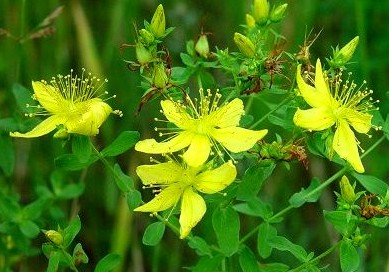|
Gardens Ablaze |
||
|
|
St. John's Wort
|
|
|
Additional St. John's Wort Information
Medicinal Uses Site Map
Home |
St. John's Wort is a short, bushy plant with bright yellow flowers that add color to the garden in mid-summer when many of the other flowers are hiding from the heat. It is not particular about soil conditions and is found growing wild in dry soils in areas with full sun. It has a turpentine-like smell, and bluish-green leaves. It grows to a height of about 3 feet, and the roots send out runners, making it an opportunistic plant that has spread all over the world. The leaves have transparent oil glands that can be seen by holding a leaf up to the light. The numerous seeds are contained in three-celled capsules, and are black. St. John's Wort can be propagated by seed, stem cuttings, or root division (in the fall). Although it is a hardy perennial (to zone 5), it is a rather short-lived plant as far as perennials go, and will have to be replaced periodically.
Custom Search
|
|
|
Gardens Ablaze |
||
 St.
John's Wort is a hardy
St.
John's Wort is a hardy